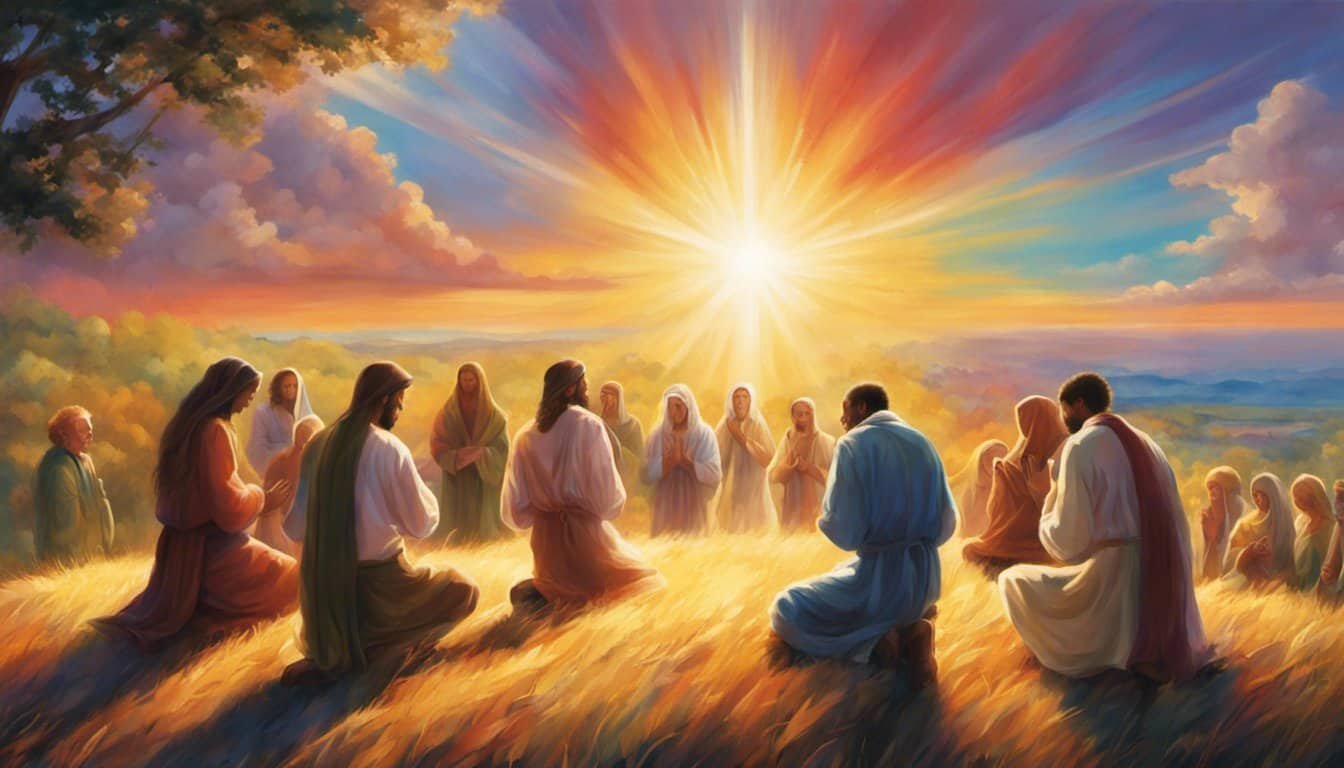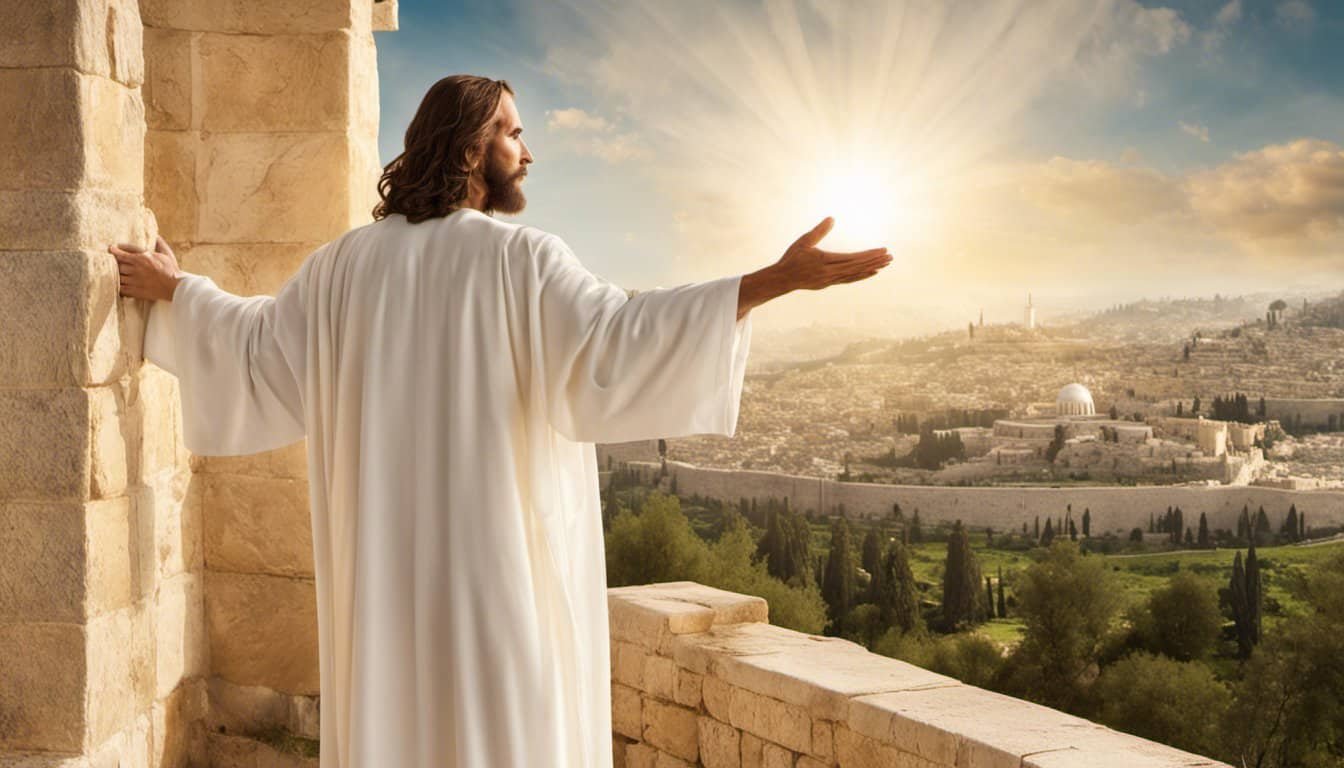The Great Awakenings were pivotal moments in American history that reshaped the landscape of Christianity. These movements not only revived religious enthusiasm but also laid the groundwork for individual beliefs and community engagement in faith. They played a crucial role in fostering a sense of personal spirituality, which changed how Americans viewed and practiced Christianity.


The First Great Awakening emerged in the early 18th century, emphasizing heartfelt religion over traditional rituals. This revival encouraged new denominations and greater participation among laypeople in religious life.
The Second Great Awakening, which followed, expanded this idea, promoting social reform and missionary work, and further embedding religion into the fabric of American society.

Together, these awakenings shifted the focus of Christianity in America to a more personal and emotional connection with faith. They helped to establish various denominations and inspired movements that continue to influence modern beliefs and practices.
Key Takeaways
- The Great Awakenings transformed American Christianity by emphasizing personal faith.
- The movements led to the growth of various denominations and increased community engagement.
- Their influence can still be seen in modern Christian practices and social values.
Historical Context of the Great Awakenings
The Great Awakenings occurred in a time filled with various religious, social, and philosophical shifts. Understanding the religious climate, the influence of Enlightenment ideas, and the connections between the New and Old Worlds helps to set the stage for these significant revivals.
Religious Climate in Early America
In the early years of America, the religious landscape was diverse. Colonists, including Puritans and Pilgrims, settled primarily in New England, bringing their distinct beliefs with them. The Church of England was also present, creating a unique blend of religious practices.
Many colonists felt a deep sense of spiritual urgency. Traditional forms of worship were often seen as too rigid, leading to a personal approach to faith. This shift emphasized individual spiritual experiences over rituals. The desire for personal connection with God would eventually fuel the Great Awakenings.
Enlightenment Influence
The Enlightenment played a key role in shaping thoughts during the Great Awakenings. This intellectual movement, emphasizing reason and individualism, encouraged people to question traditional authority, including religious leaders.
Figures of the Enlightenment argued for the importance of personal interpretation of faith. As colonists embraced these ideas, they began to value reason alongside faith. This blending of thought opened doors for religious revivals. Many believed that a personal relationship with God was essential to understanding faith, laying the groundwork for the fervent awakenings to come.
The New and Old Worlds
The connection between the New World and Europe was significant during this period. Many colonists brought religious traditions from their old homelands. As these traditions mingled with new American experiences, unique expressions of faith evolved.
This cultural exchange contributed to a growing sense of identity among American Christians. The Great Awakenings reflected this blend, as colonists sought to define their beliefs apart from European influences. In doing so, they formed a more distinct American Christianity, paving the way for future religious developments.
The First Great Awakening

The First Great Awakening was a major religious revival in the American colonies in the 18th century. It emphasized emotional connection to faith and personal conversion. Key figures like Jonathan Edwards and George Whitefield played crucial roles in spreading this movement, which transformed the landscape of American Christianity.
Key Figures: Jonathan Edwards and George Whitefield
Jonathan Edwards was an influential theologian known for his powerful sermons. His most famous sermon, “Sinners in the Hands of an Angry God,” stirred many listeners and pushed them towards deep, personal conversion.
George Whitefield, an eloquent preacher, traveled widely and drew huge crowds. He focused on open-air preaching and appealed to emotions, making religion accessible to many. Together, Edwards and Whitefield helped foster a passionate religious climate that attracted numerous followers.
Theological Shifts and New Practices
The First Great Awakening sparked new theological ideas. Many people embraced the concept of justification by faith, moving away from strict adherence to church rituals. This shift allowed individuals to seek a personal relationship with God.
New practices were born during this time. Emotional revivals became common, where people would gather for intense worship. The rise of “New Lights” arose in opposition to the “Old Lights,” traditionalists who resisted change. This divide highlighted the varying perspectives on faith and practice in early American Christianity.
Impact on Colonial and Religious Life
The First Great Awakening transformed colonial life and church communities. It brought a sense of unity among various congregations, leading to increased church attendance and participation.
Many denominations grew, particularly within the Presbyterian denomination, as new followers embraced the revival’s message. Institutions like Princeton University later emerged from this fervent religious atmosphere, shaping future religious and educational landscapes.
People began to view their religious beliefs as personal and individualized, allowing for greater diversity in practice and thought. The wave of revivalism changed how faith was experienced, creating lasting effects on American society and Christianity.
Consequences of the First Awakening
The First Great Awakening brought significant changes to American Christianity and society. Its influence extended to personal faith, political ideas, and the foundations of a new nation. Several key outcomes are noteworthy.
Empowerment of the Individual

The First Great Awakening emphasized personal faith and the individual’s relationship with God. Preachers encouraged people to seek their own understanding of religious truth. This shift allowed many to feel empowered in their beliefs.
As a result, congregations began to see less control from established church authorities. Individuals felt free to interpret the Bible themselves. The rise of “New Lights” brought a vibrant, emotional style of worship, which appealed to many.
This movement set a precedent for later philosophies that favored individual rights. It paved the way for ideas found in the Declaration of Independence, where personal liberties became essential.
Rise of Religious Tolerance and Democracy
The Great Awakening contributed to a more tolerant view of different religious beliefs. People from various backgrounds attended revivals together. This mixing fostered a sense of community that crossed denominational lines.
The idea of equal participation in worship led to a broader acceptance of differing views. As individuals began to embrace different faiths, it helped lay the groundwork for religious freedom in America.

This shift also connected to the growth of democracy. As people demanded more say in their religious lives, they started to seek the same in politics. The Founding Fathers recognized these ideas, which influenced the formation of democratic principles.
Seeds of the American Revolution
The Great Awakening left a lasting impact on the political landscape leading up to the American Revolution. It encouraged a questioning of traditional authority, both in religion and governance. Many who experienced this awakening also began to challenge British rule.
The emotional and communal aspects of the movement inspired a sense of unity among colonists. As they came together during revivals, they also united against oppressive policies. Figures like Benjamin Franklin saw the connections between the Awakening and the call for independence.
As individuals pushed for their rights, the seeds for the Revolutionary War were sown. The ideals of freedom and self-governance became central themes in the fight for independence, echoing the earlier religious revival.
The Second Great Awakening

The Second Great Awakening marked a significant revival period in American Christianity. It focused on personal faith and a direct relationship with Jesus Christ. This movement spurred not only religious enthusiasm but also inspired various social reforms.
Key Innovations and Itinerant Preaching
During the Second Great Awakening, itinerant preachers played a crucial role in spreading the message. They traveled widely, holding revivals in towns and rural areas. These events drew large crowds and generated excitement about faith.
These preachers emphasized a personal relationship with Jesus Christ. They encouraged individuals to seek personal conversion over traditional denominational practices. Techniques such as camp meetings made religion accessible to many. The movement also encouraged the idea of personal holiness, urging people to live righteous lives.
Prominent figures, like Charles Finney, introduced new methods in preaching. Finney’s style was engaging, appealing directly to people’s emotions. His innovative approach significantly impacted church growth and community involvement.
From Personal Conversion to Social Reform
As individuals experienced personal conversion, the Second Great Awakening shifted focus towards social issues. People felt inspired to address societal problems and promote reforms. This included movements on education, abolition of slavery, and women’s rights.

The missionary movement gained momentum during this period. With a sense of urgency, churches aimed to spread Christianity both within the country and abroad. Yale became a vital center for training ministers and promoting reformist ideas.
Many believers started linking their religious beliefs to social action. They believed that living out their faith meant improving society. This connection between personal faith and community responsibility helped shape modern American Christianity and its ongoing evolution.
The Great Awakenings’ Influence on Modern Christianity
The Great Awakenings significantly shaped modern Christianity by creating a focus on personal faith and community engagement. They gave rise to evangelical movements and emphasized the importance of a direct relationship with Jesus Christ through the Holy Spirit.
Evangelicalism and Revivalist Traditions
The Great Awakenings helped establish evangelicalism as a major force in American Christianity. This movement stressed personal conversion and the need for a deep, emotional experience of faith.

Revivalist traditions encouraged gatherings where people could express their spirituality openly. These events often featured passionate preaching and music, which drew large crowds.
Many churches today still reflect this enthusiastic approach, emphasizing active engagement and outreach. Evangelical denominations like Baptists and Methodists emerged during this time. They focus on spreading the Gospel and encouraging church attendance, which remain vital in modern American society.
The Understanding of a Personal Relationship
The Awakenings highlighted the idea of a personal relationship with Jesus. This belief shifted how many Christians view their faith.
Instead of merely participating in rituals, individuals started to seek a deep, personal connection with God.
This change emphasizes the role of the Holy Spirit in guiding believers. Many modern Christians report feeling intimate communication with God in their daily lives.

Forums and small groups foster these connections, making faith more accessible and relatable.
This shift could lead to renewed church attendance as people feel a more profound sense of belonging and purpose in their spiritual lives.












